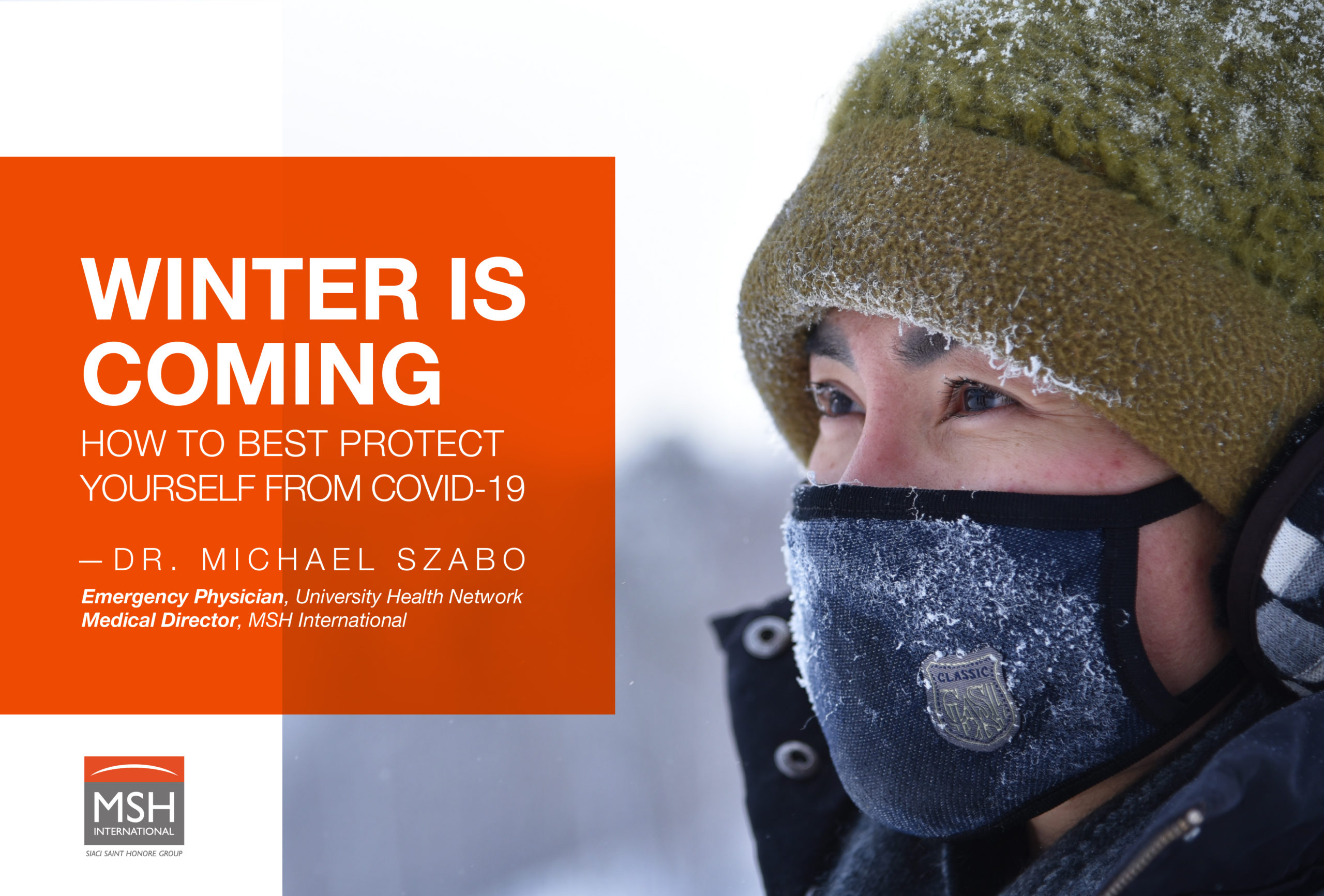We are still learning about transmission of the virus, SARS-CoV-2, that causes COVID-19. We have come to learn that the way this virus spreads is a bit more complicated than what we initially understood. Thankfully, the main mode of transmission is still felt to be through direct exposure to respiratory droplets that carry the infectious virus. These types of respiratory droplets are larger and heavier in size and rarely travel farther than six feet. They fall quickly to the ground or land on surfaces. If you are around someone who is infectious, your highest likelihood of catching the virus is if you inhale respiratory droplets that they have exhaled while you are in close contact with them. Hence the importance of masks, particularly in situations when you cannot adequately physically distance.
The comfort in knowing that this is the main mode of transmission is that it offers us a mode of control. If we keep at least six feet away from others or wear a mask if we cannot always do this, then we can substantially lower our risk.
We can also be exposed by touching surfaces that are contaminated with the virus and then touching our eyes, nose, or mouth. However, what is interesting is that we have come to understand through careful study that this mode of transmission is a less common route. We should still be careful about it, though. Regular hand-washing and avoiding touching our face help to minimize the risk of exposure through this route.
However, it is unfortunately not so simple. There have been some rare case reports of people getting infected when they have kept to these rules. There have been outbreaks of cases when people were far away from infectious individuals, in indoor settings. How could this happen?
The CDC has recently amended its guidelines on transmission to reflect our new understanding. This link explains the new understanding in detail. Basically, the new guidelines state that there are rare circumstances where you can become infected when you are far apart from others, beyond the six-foot distance. This can occur especially if you are in an enclosed space, with inadequate ventilation. Infectious people in such a location who are breathing heavily, such as when singing, shouting, or exercising, can produce significant amounts of smaller respiratory droplets that are light and can stay suspended in the air for longer periods, sometimes for hours. These suspended droplets have the capability of travelling longer distances and, if there are enough of them, can lead to infections in those who are far away. When we are outdoors or in an indoor area with good air circulation, such small droplets are blown away and don’t have the ability to stay suspended in air and become concentrated. But given the right circumstances, they can. It’s vitally important that we are aware of this in order to fully protect ourselves.
The new and improved guidance is simply to avoid crowded indoor settings, especially enclosed spaces with inadequate ventilation. Stay away from people shouting, singing, or breathing heavily. There is a small chance of becoming infected in these situations, even when physically distanced. Of course, the wearing of masks helps to reduce these risks, and in that regard, there is now an update on that subject as well.
The Public Health Agency of Canada has now revised its mask guidelines in anticipation of most of us spending more time indoors over the winter. The use of 3-layer masks has now been recommended as additional protection. This link provides more details on the ideal mask. An optimal mask contains two layers of a tightly woven material fabric, such as cotton or linen. The third (middle) layer should be ideally a filter-type fabric, such as a non-woven polypropylene fabric. You can use a craft fabric, or even a folded paper towel or coffee filter. But be sure to not use plastic as this will make it difficult to breathe. A more robust mask such as this is felt to be much better protection now that we will be spending more time indoors.
The changing of guidelines and recommendations can be quite confusing for many of us. It can sometimes make us question the validity of what we are being told. Ultimately, it should serve to increase our trust in the experts issuing the guidance. The science is changing, and our understanding is always growing. Public health recommendations must also change to reflect this situation. We don’t want to keep to rigid rules and regulations when it comes to keeping ourselves and our loved ones safe. As we move into winter, we need to adapt to the new knowledge about the transmission of SARS-CoV-2 and tweak our approach. Stay safe, everyone!

